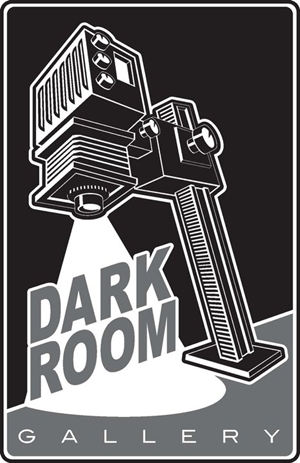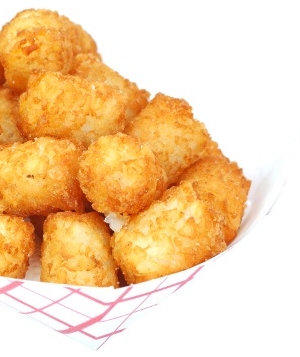 TATER TOT
TATER TOT
brulée
So I was watching a “hot dish” competition on Bizarre Foods America the other day. (A “hot dish” competition is sort of like a casserole contest.) This particular contest was being held in a mid-western town’s VFW or American Legion Hall. Many of the contestants sported beehive hairdos, mom jeans and gingham aprons. Then out of nowhere, a woman in Bermuda shorts whipped out a BLOW TORCH to brown the top of her tater tot casserole like it was creme brulée–proof positive that culinary technology and techniques have made it to every fishbowl, no matter how small. This next Call wants to see your techy stuff on a tiny scale or large, your choice. How big is your fishbowl?
Check out this Call for Entries from the Darkroom Gallery (Essex Junction, VT) for Macro/Micro: Photographic Extremes. The entry fee at Darkroom is always low ($20), and they will provide free matting & framing if you work in their standard sizes. Take a look…
*Editor’s Note: If you enter, please make sure to let them know that you found the Call on ArtAndArtDeadlines.com. We’ve got a great history with them…including Best of Show!
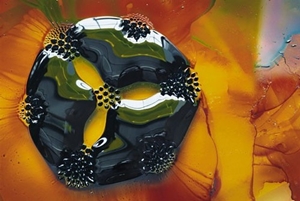 CALL for ENTRIES:
CALL for ENTRIES:
Macro/Micro:
Photographic Extremes
This exhibit is about two photographic extremes, regardless of what you call them: Micro Photography (AKA Macro Photography) and Macrophotography (AKA Wide Angle Photography). The Darkroom Gallery wants to see your best work using these photographic tools.
Look it up, Macro (from Greek prefix “makros-” meaning “large”). Most sciences or areas of study use this prefix as defined. Macroeconomics, for example: “dealing with the behavior of the whole economy”. Microeconomics: “study of the behavior of small economic units, such as that of individual consumers, opposite of macroeconomics”. So what happened with Photography? Commonly, photographers call images of things small and extreme closeups, Macro Photography.
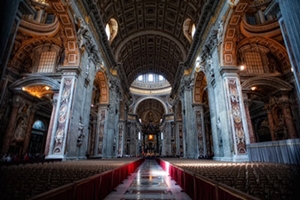 What then is Microphotography? Interestingly, Nikon uses the term Micro for it’s close focusing lenses, but not Canon. So, even the manufacturers don’t agree.
What then is Microphotography? Interestingly, Nikon uses the term Micro for it’s close focusing lenses, but not Canon. So, even the manufacturers don’t agree.
Microphotography reveals a world unseen by the naked eye. It often exposes patterns and designs that create sublime abstract images. Macrophotography gathers a view often larger and grander than can be gathered with the human eye. Both introduce distortions either through lens characteristics or stitching construction techniques that are creative tools used to produce these distinctive images.
ELIGIBILITY: Entrants must be at least 18 years old. If younger, you must have a legal guardian make the submission for you.
DEADLINE:
May 2, 2012
NOTIFICATION:
May 7, 2012
JUROR: Science photographer Felice Frankel is a research scientist in the Center for Materials Science and Engineering at the Massachusetts Institute of Technology. Working in collaboration with scientists and engineers, Felice’s images have been published in over 200 journal articles and/or covers and various other publications for general audiences such as National Geographic, Nature, Science, Angewandte Chemie, Advanced Materials, Materials Today, PNAS, Newsweek, Scientific American, Discover Magazine, and New Scientist among others.
She is a fellow of the American Association for the Advancement of Science and has received awards and grants from the National Science Foundation, the National Endowment for the Arts, the Alfred P. Sloan Foundation, the Guggenheim Foundation, the Camille and Henry Dreyfus Foundation, the Graham Foundation for Advanced Studies in the Fine Arts, among others. Felice was a Loeb Fellow at Harvard University’s Graduate School of Design and was awarded the Distinguished Alumna Award at Brooklyn College, CUNY and the Lennart Nilsson Award for Scientific Photography.
Felice founded the Image and Meaning workshops and conferences whose purpose is to develop new approaches to promoting the public understanding of science through visual expression.
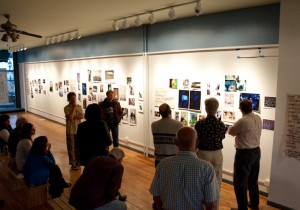 She and her work have been profiled in the New York Times, Wired, LIFE Magazine, the Boston Globe, the Washington Post, the Chronicle of Higher Education, National Public Radio’s All Things Considered, Science Friday, the Christian Science Monitor and various European publications. She exhibits throughout the United States and in Europe. Her limited edition photographs are included in a number of corporate and private collections.
She and her work have been profiled in the New York Times, Wired, LIFE Magazine, the Boston Globe, the Washington Post, the Chronicle of Higher Education, National Public Radio’s All Things Considered, Science Friday, the Christian Science Monitor and various European publications. She exhibits throughout the United States and in Europe. Her limited edition photographs are included in a number of corporate and private collections.
AWARDS: All selected entries are exhibited in the gallery and included in a full color exhibit catalog. Juror’s Choice receives a 20×35″ vinyl exhibit banner featuring their image. People’s Choice gains free entry into a future exhibit.
SALES: Darkroom offers free matting and framing of accepted entries for the duration of each of their exhibitions, subject to standard sizes. Photographers set their own prices if they wish to sell their work and retain all rights to their photographs. For commission details, go to the bottom of the Submisssion Rules page!

